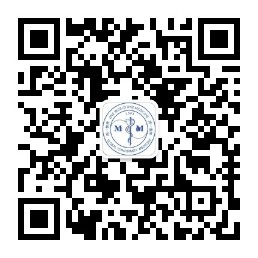目的 探讨系统免疫炎症指数(SII)与辅助性T细胞17(Th17)/调节性T细胞(Treg)值对强直性脊柱炎(AS)的诊断价值。方法 选取75例AS患者为作为观察组,另选取75例性别、年龄匹配的健康体检者作为对照组,比较两组中性粒细胞计数(NEU)、血小板计数(PLT)、淋巴细胞计数(LY)、SII、Th17、Treg、Th17/Treg值,以及白细胞介素(IL)-17、IL-23水平。采用多因素 Logistic 回归模型分析AS发生的影响因素,采用受试者操作特征(ROC)曲线分析影响因素单独及联合诊断AS的价值。结果 观察组患者SII、NEU、PLT、Th17/Treg值,以及血清IL-17、IL-23水平高于对照组,LY、Th17、Treg低于对照组(P<0.05)。多因素 Logistic 回归分析结果显示,SII、PLT、LY、Th17、Treg、Th17/Treg值,以及血清IL-17、IL-23水平是AS发生的影响因素(P<0.05)。ROC曲线结果显示,SII、PLT、LY、Th17、Treg、Th17/Treg值,以及IL-17、IL-23水平及联合诊断AS患者的曲线下面积分别为0.884、0.775、0.896、0.736、0.796、0.617、0.865、0.824、0.995。结论 SII、PLT、LY、Th17、Treg、Th17/Treg值,以及IL-17、IL-23水平是AS的影响因素,上述指标联合对AS的诊断具有较高的价值。
微创医学 页码:279-283
作者机构:新余市中医院 1 风湿免疫科,2 中药房,江西省新余市 338025
基金信息:江西省卫生健康委科技计划项目(编号:202410791) *通信作者
- 中文简介
- 英文简介
- 参考文献
Objective To investigate the diagnostic value of systemic immune inflammation index(SII) and helper T cell 17 (Th17)/ regulatory T cell (Treg) ratio in ankylosing spondylitis (AS). Methods Seventy-five patients with AS were selected as the observation group, and 75 gender and age matched healthy examinees were selected as the control group. The neutrophil count (NEU), platelet count (PLT), lymphocyte count (LY), SII, Th17, Treg, Th17/Treg ratio, interleukin (IL)-17, IL-23 levels were compared between the two groups. Multivariate Logistic regression model was used to analyze the influencing factors of AS occurrence, and receiver operating characteristic (ROC) curve was used to evaluate the diagnostic value of these influencing factors in diagnosing AS both individually and in combination. Results In the observation group, the values of SII, NEU, PLT, Th17/Treg ratio, as well as the serum levels of IL-17 and IL-23 were higher than those in the control group, while their LY, Th17 and Treg were lower than those in the control group (P<0.05). The results of multivariate Logistic regression analysis showed that SII, PLT, LY, Th17, Treg, Th17/Treg ratio, as well as the levels of IL-17 and IL-23 were influencing factors for the occurrence of AS (P<0.05). The ROC curve results indicated that the areas under the curves for SII, PLT, LY, Th17, Treg, Th17/Treg ratio, as well as IL-17, IL-23 levels, and their combined diagnosis in identifying AS patients were 0.884, 0.775, 0.896, 0.736, 0.796, 0.617, 0.865, 0.824, 0.995, respectively. Conclusion SII, PLT, LY, Th17, Treg, Th17/Treg ratio, as well as the levels of IL-17 and IL-23 are influencing factors of AS, and their combination has a high predictive value for the diagnosis of AS.
-
无




 注册
注册 忘记密码
忘记密码 忘记用户名
忘记用户名 专家账号密码找回
专家账号密码找回 下载
下载 收藏
收藏
